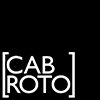The aim of this post is to explain the design / build process, in order.
Hopefully I can shed some light on this mysterious path for those of you who’ve never ventured into these woods.
Design Brief
The first step is to come up with a design brief.
This is put together after a meeting between the client and designer, outlining the overall vision for the project. The designer will ascertain constraints that will affect the design, and start will form an idea on function.
From the design brief, the design team will create the conceptual design (also known at schematics or sketch plans) to give a graphical representation of space, and how we intend to use it.
Quotation Provided
A fee proposal is provided for the design project. Generally speaking, no further design work will take place until the designer has been formally engaged by the client.
A design project fee proposal does not include the project costing or quotation for supply of any kind.
Conceptual Design
Once engaged, the design team will begin conceptual design. This is a low detail drawing set intended to start a conversation between the client and designer.
The approximate size and proposed function of the spaces is considered, along with rudimentary furniture and joinery selections.
After an agreed concept is reached, the design can be developed.
Design Development
At this stage, materials and construction details are considered.
The designer will add dimension to the drawings and will complete 3D renderings to further explain the design intent.
Details of lighting placement, joinery function, technology systems and appliances are furthered.
The Building Certifier, Town Planner and Consulting Engineer are engaged as required.
After the client has signed off on the design drawings, 'contract documents' are created for the tender process.
Tender Issue / Contract Documentation
The drawings made for tendering and construction are called 'contract documents' because they will become part of the legal contract between you and the builder or product supplier, depending on how the project is run.
The aim of this stage is to get a complete picture of what will be built, so that all companies tendering for the project are quoting to supply the same end product.
The contract documents will generally include; a written specification, tabulated schedules, and working drawings.
These documents will contain all details required for construction of the project, and the supply of associated fixtures, equipment and furnishings.
Tender Process
The 'Tender Issue' contract docs are sent out to a select group of companies for quoting.
The designer will handle all queries, and make sure all companies have everything they need to provide a quote.
Once the quotes come in, the designer will look over all items to make sure everything is included.
The designer will contact the client to give the quoted figures.
If the client is happy with the quoted figures, the designer will continue with the tender process.
If not, the designer will revise drawings as decided in a meeting. Note that major revisions at this stage may attract a 'variation' to the design fee.
Once the design has been finalised, the designer will then meet with the companies responsible for submitting the two best tenders, and discuss all aspects of the job to ensure nothing has been omitted.
If there are any issues with inclusions, the price will be recalculated, and submitted for a final decision.
Construction
The tender is then granted to the most suitable company, or companies (not always the lowest price) and construction commences.
'Construction Issue' contract docs are issued.
Joinery will be inspected by the designer prior to construction completion.
Site work commences.
Site inspections will be made before progress payments, and a final ‘defects’ inspection at the project’s ‘practical completion’.
After the completion of the construction stage, the final Inspections will be conducted by the Building Certifier and the Health Inspector (for hospitality fit-outs) to ensure regulatory requirements have been met.
…And there you have it. Easy as pie.
Navigate the links below for more blog posts related to design and construction, or email me if you're old school and prefer the personal touch.




